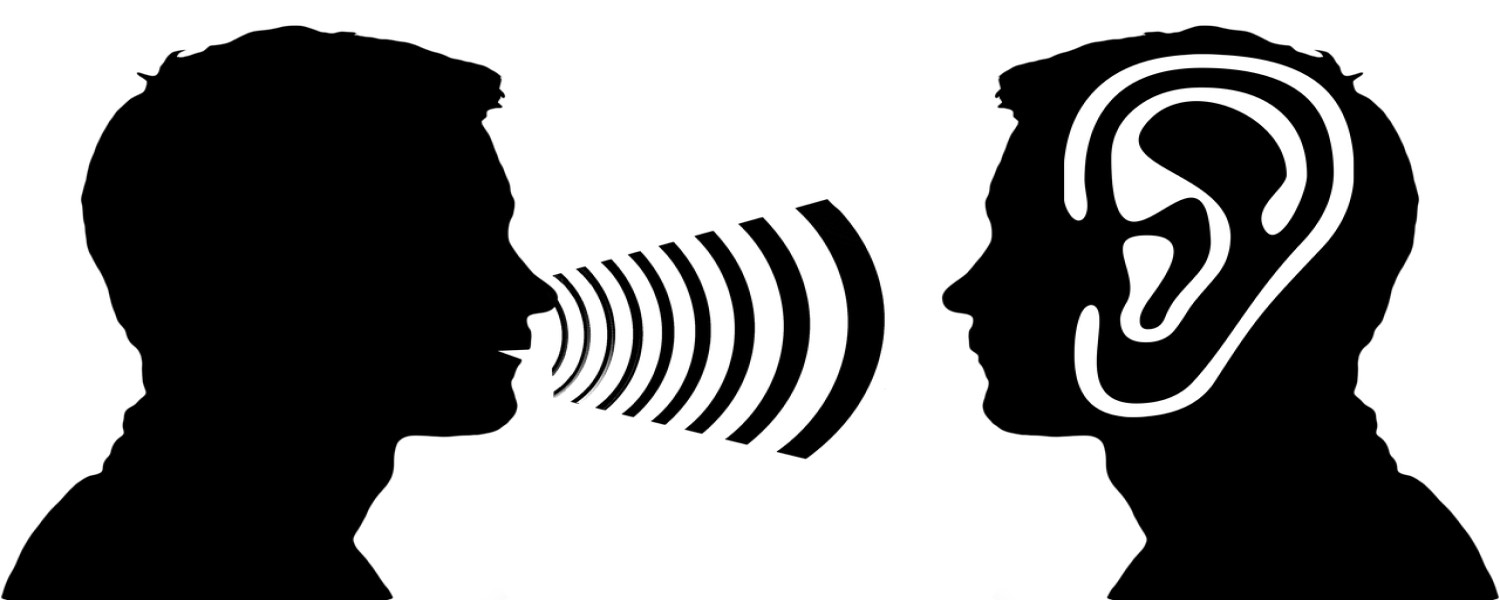Effective Listening: This is How to Listen With Your Mind
We are going to start this blog post with a little effective listening exercise, so listen up to the following scenario:
A man named Seymour Butz worked in a butcher’s shop in New York City. His height was 5’9”, his waist was 38 inches, and he worked 10 hours per day and earned $150 U.S. dollars per day.
The question is…
What did Seymour weigh?
Any idea?
Scroll down for the answer…
If you said: “he weighs meat!” – (remember, he works in a butcher shop), you are correct!
Which just shows the importance of effective listening!
Now, if you didn’t get the answer correct, worry not as I will give you another chance to redeem yourself at the end of this blog post.
The Importance of Effective Listening: Listen with Your Mind!
As Mortimer Adler so eloquently put it in How to Speak, How to Listen:
“If we use only our eyes or ears to take in the words, but do not use our minds to penetrate through them to the mind that delivered them, we do not perform the activity that is essential to either reading or listening. The result is failure of communication, a total loss, a waste of time.” 3
Effective listening is a communication skill that can make a huge difference in our relationships with others. As Make Yourself Unforgettable: How to Become the Person Everyone Remembers, and No One Can Resist from Dale Carnegie Training suggests: “Listening in the truest sense includes many nonverbal and nonaudible factors, such as body language, facial expressions, cultural assumptions, and the reactions of the speakers and the listeners to each other.” 1
Before we discuss some tools for effective listening, let’s first review some different levels of listening as well as some typical listening mistakes courtesy of the aforementioned Dale Carnegie training book.

Levels of Listening
These 6 levels of listening are ones that most of us are familiar with and range from the least attentive to the most empathetic and attentive.
(1) “Checked out” listening aka you are not listening at all
In this first level, you are quite sure someone is talking to you, but that’s pretty much it. You aren’t completely ignoring them, but it is pretty darn close! While there are circumstances when this is acceptable behavior, make sure you are doing it consciously rather than it being an impolite reflex.
(2) Minimal listening
This one is a bit more attentive, but barely. Someone is talking to you, you are present, but you are somewhere else. You are somewhat taking part in the conversation and reply with prefabricated responses that the other person wants to hear to keep them comfortable. While the other person won’t usually call you out for bad listening, they are likely thinking, “Would you please pay attention to what I’m saying.”
(3) “I’m Listening to You, But It’s About Me”
In this case, you are listening, but adding your own interpretation to what they are saying. By doing this you make the words fit what you think or want them to fit. This can be dangerous as you are receiving a misguided interpretation of the facts and feelings the other person is trying to communicate.
(4) “Just the Facts” Listening
This one involves a pure and simple information exchange without taking into account any feeling or emotions being expressed. “Just the feelings” is ok if you are simply trying to communicate what’s what. However, if feelings and motives are involved it could be problematic.
(5) Empathetic Listening
We are getting closer to more effective listening as empathetic listening includes body language, facial expressions and sensitivity to words as well as giving feedback. This allows you to understand the situation from the other person’s point of view, meaning you recognize how they are feeling. The idea is to aim for genuine understanding.
(6) Optimal Listening
Lastly, we come to optimal listening which adds on to empathetic listening with an action-oriented element. In other words, not only are you hearing what they are saying but you are also suggesting ideas for positive change. You are helping them consider other options and their well-being is the focus.
Typical Listening Mistakes
Most times, especially in the workplace, mistakes are attributed to the speaker. However, there are many times when it is the listener who can become a more effective listener by limiting these mistakes:
Rehearsing: this is one we have all been guilty of at some point in our lives. Instead of listening to the other person, we are instead thinking about what we are going to say next.
Evaluating: when we prejudge the other person as being boring or incompetent, we may be right, but we are also creating the attributes we condemn.
Playing “topper”: this is taking whatever the other person says and relating it to our own experiences because they are more interesting. “That’s great that your kid did so well on the SAT, my little genius got a perfect score.”
“Truth-telling”: the other person only gets a few sentences out and you are already giving unsolicited wisdom and advice.
Faultfinding: No matter what the other person says, you disagree with it because it’s fun and you get away with it.
Placating: this one is the opposite of faultfinding and has you basically agreeing with whatever they say as a way of checking out and not paying attention. For example: “Yeah, yeah”, “Really”, “I know”, “Amazing”, “Really?”
Derailing: Often used by people who have power over others, this one involves completely and suddenly changing the subject.
Tools for Effective Listening
In his TED Talk “5 Ways to Listen Better” and book How to Be Heard: Secrets for Powerful Speaking and Listening, Julian Treasure offers some tools for effective listening using an acronym called RASA.
(1) Receive
First, you need to receive what the other person is saying by being present and giving them your full attention. This includes maintaining eye contact, using attentive body language (by leaning forward and not back), facing them and not making any distracting gestures or movements.
(2) Appreciate
Next, is to provide some visual or auditory gestures that you are completely engaged. As Treasure says, “These may include small affirmatory facial expressions like eyes widening, eyebrows lifting, smiling, nodding and so on—you know how to do all this naturally!), as well as those little noises that oil conversation: aah, ohh, mmm or whatever fits your personal style.” 2
(3) Summarize
This is where after a few moments of someone speaking you confirm that you have understood what they are trying to convey. This can be accomplished with a simple: “So, what you are saying is…”
(4) Ask
Lastly, is to ask relevant and appropriate questions throughout the conversation and particularly at the end. This does a couple of things: first, it shows you have been paying attention, second, it can ensure you have understood what they are saying.

It’s Time for Redemption…
…at least for those of you who answered the question in the introduction incorrectly.
Ok, listen closely…
You are driving a bus. The bus starts out empty. At the first stop, 6 people get on. At the second stop, 5 people get on and 2 people get off. The third stop sees 8 people get on and 4 people get off.
Here is the question…
What is the shoe size of the bus driver?
Until next time, keep using effective listening to listen with your mind…and as always…PYMFP!
–Rick
P.S. If you aren’t sure about the driver’s shoe size, here’s a clue – look at the first word of the problem.
P.P.S. Wanna know more? Check out the entire book.
Use It or Lose It
A 4-step process we can use for effective listening utilizes the acronym RASA:
(1) Receive – what they are saying by being present.
(2) Appreciate – by using physical or auditory gestures to show you are engaged.
(3) Summarize – what they have said to confirm understanding.
(4) Ask – questions throughout and at the end.
When to Use It
When you are engaged with others in conversation.
What Do You Think?
Do you practice effective listening? Do you have any other suggestions for effective listening? Please share your thoughts in the comments below.
If you enjoyed this post, it would mean the world to us if you shared it with people you care about via any of the social media platforms below!
Popular Previous Posts:
The Science Behind the Multitasking Myth and How to Avoid It
Brain Rules: This is How to Use Your Brain Better!
Starting Your Career: 8 Successful Strategies to Employ!
This is How to Use ‘Fear-Setting’ for Overcoming Your Fears
References
1 Make Yourself Unforgettable: How to Become the Person Everyone Remembers, and No One Can Resist from Dale Carnegie Training
2 How to Be Heard: Secrets for Powerful Speaking and Listening by Julian Treasure
3 How to Speak, How to Listen by Mortimer Adler

Some people are gifted in being able to convey information in a very interesting way. Others often just like hearing themselves talk and go on and on and on. However , my friends are interesting and fun to be around. I think it is easy to be attentive if you are interested in the person or the topic. There are times when I realize I should be a more focused and active listener. Good reminder Rick!
Hi Eileen, Yeah it’s a great reminder for all of us, as Dale Carnegie famously said, “first seek to understand, rather than to be understood’. Take care, Rick
Effective listening depends on four things -a) the speaker, b) the subject, c) time of day, and (d) the listener’s mood.
(a) Some people are easy on the ears, others drone on and on in a monotone and use filler words.
(b) Now which would you rather be a part of: a conversation on the backstage activities at a strip club, or the inner workings of a hog rendering factory.
(c) People are much more attentive mid-morning than immediately after lunch.
I(d) f someone is concerned about getting enough money together to pay the rent, that person will totally ignore any discussion or conversation.
In your levels of listening, I believe most people fall into Level (3).
Oh, the answer to your other question is 9 1/2W.
Another quote from the old country – –
“I hear what you are saying, but I have no idea what you are talking about”
Hi Dave, Some great points! As for #3, very true, after lunch, people are definitely less focused and it is the best time to do admin work as we discussed previously. Love that old country quote hadn’t heard it before! Have a good one! Rick